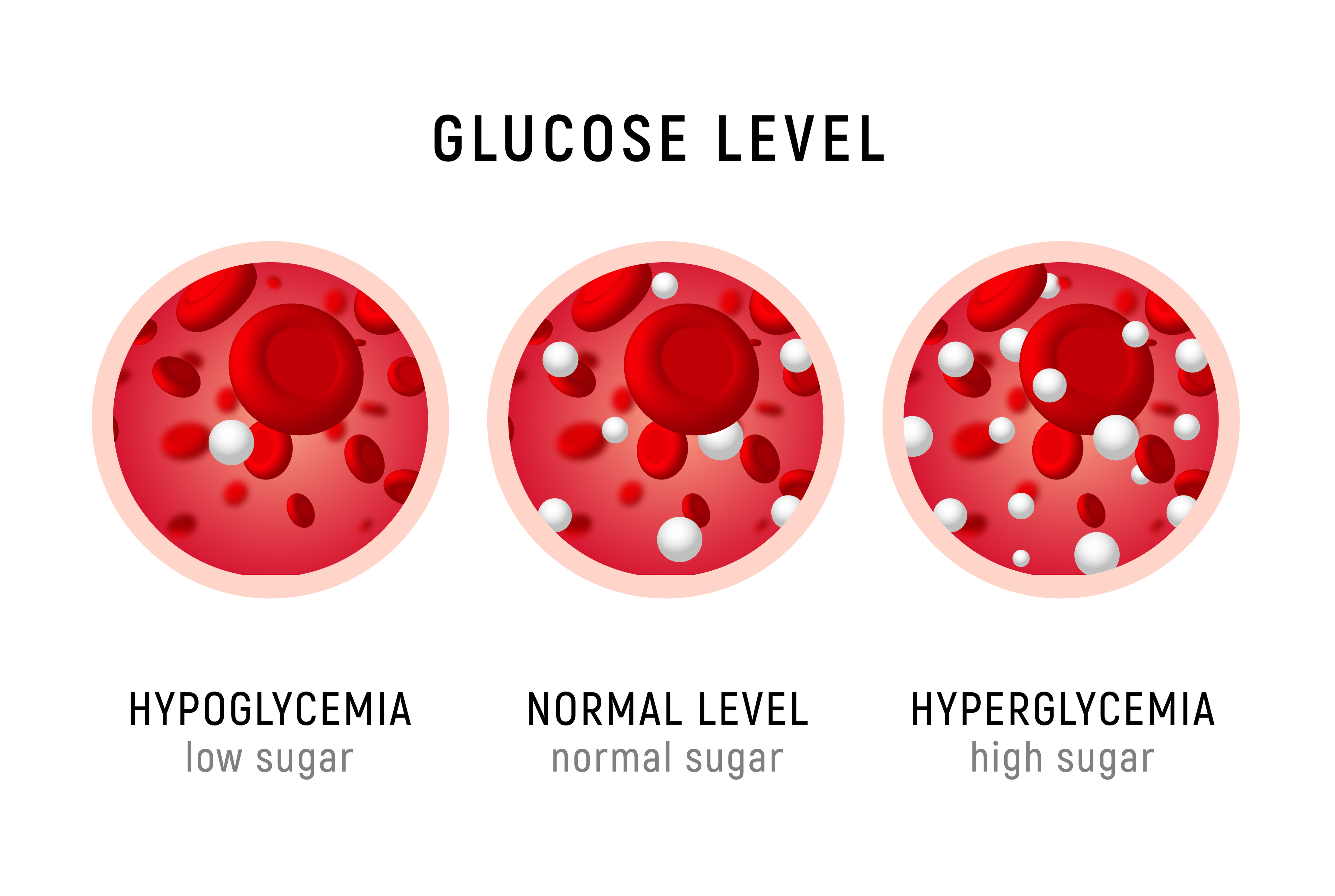It is important to keep blood sugar levels normal to prevent and avoid very costly health issues. Glucose, at normal levels, is the necessary fuel for the cells in our body and helps our body to function and perform tasks, but it can be very detrimental at low and high levels.
Normal blood sugar remains less than 100 mg/dL after not eating for at least 8 hours and less than 140 mg/dL 2 hours after eating. For people without diabetes, their blood sugar levels are around 60 to 90 mg/dL before meals.
High blood sugar levels can lead to very serious and long-term complications. High blood sugar (hyperglycemia) can have many causes such as eating more than expected, being sick and not getting enough insulin. Some symptoms of high blood sugar include feeling very tired, thirsty, having blurry vision, and the need to urinate more often. High blood sugar levels can permanently damage the pancreas as it can slowly erode the ability of cells in the pancreas to make insulin. High blood sugar can also result in atherosclerosis, which is the hardening of blood vessels. Most of the body can be affected and harmed by high blood sugar.
The blood vessels can be damaged and cause issues such as: kidney failure/disease, strokes, heart attacks, nerve damage, vision problems/blindness, poor circulation to legs and feet, erectile dysfunction, slow wound healing, and a weakened immune system.
One should talk to their doctor about keeping their blood sugar levels within range. To treat high blood sugar, it is suggested to be more active, take medicine as instructed by their doctor, follow one’s diabetes meal plan, check blood sugar as instructed by doctor, and talk to their doctor about the right insulin to use.
People may also experience lower blood sugar. Low blood sugar (hypoglycemia) can be due to many causes such as drinking alcohol or not eating enough. However, many people’s glucose does not fall below 60 as the liver keeps the levels normal by converting muscle and fat into sugar. Some signs of low blood sugar include shaking, sweating, anxiety, hunger, irritability, and dizziness. Like high blood sugar, low blood sugar can be dangerous, so it is important to properly treat it.
To treat low blood sugar, make sure you are taking the necessary amount of glucose tablets, drink fruit juice, drink regular soda, or eat some pieces of hard candy. Wait some time and then check sugar level again and repeat one of the treatments again until blood sugar is above 60 mg/dL or above.
To conclude, it is essential to keep one’s blood sugars normal to avoid these health complications. Some tips that one can do to help manage blood sugar levels include:
- Eating a healthy diet
- Getting regular physical activity
- Tracking blood sugar levels and noting what makes it go up/down
- No skipping meals
- Eating foods with less calories, saturated fat, trans fat, sugar, and salt
- Drinking enough water
- Controlling food portions
- Limiting alcohol intake

